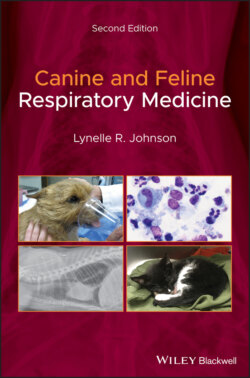Читать книгу Canine and Feline Respiratory Medicine - Lynelle Johnson R., Lynelle R. Johnson - Страница 33
Testing for Hemorrhage
ОглавлениеAnimals presented for epistaxis, hemoptysis, and hemothorax require added consideration when completing a diagnostic work‐up because of the concern for worsening the animal's clinical presentation with invasive procedures when a bleeding disorder is present. Therefore, the first thought should be to consider systemic causes of bleeding. For nasal bleeding, disorders of primary hemostasis (deficits in platelet number or function and vascular disorders) are more common than secondary coagulopathies (defects in clotting factors), and hypertension should also be excluded. A CBC will provide accurate assessment of platelet numbers, although determination of platelet function requires additional tests. A von Willebrand factor antigen assay is commercially available, but more specific tests of platelet function are typically only available at academic or research institutions. However, a buccal mucosal bleeding time (BMBT) can be performed in hospital practices to estimate platelet and vascular function. This test requires a compliant dog or a heavily sedated cat, because of the need for gentle restraint and for working in the region of the mouth.
Figure 2.1 Coagulation cascade. FDPs, fibrin degradation products.
To perform a BMBT, the animal is restrained in lateral recumbency and the lip is gently restrained upward with a strip of gauze to expose the buccal mucosa. Multiple squares of paper towel or filter paper should be available to gently blot the region below the incision into the mucosa. A spring‐loaded device containing a retractable blade (Surgicutt®, Accriva Diagnostics or JorVet®, Jorgensen Laboratories, Loveland, CO, USA) is used to make a standardized incision on the mucosa opposite the premolars. Blood can be blotted from below the incision line, but the clot should not be disturbed in order to obtain an accurate bleeding time. In normal dogs, a clot will be observed in 2–4 minutes.
For animals with hemoptysis or hemothorax, a disorder of secondary hemostasis should be investigated by performing a coagulation panel (Figure 2.1). The one‐stage prothrombin time (OSPT) provides an assessment of the extrinsic coagulation pathway and vitamin K‐dependent factors, while the activated partial thromboplastin time (APTT) evaluates the intrinsic and common pathway. In an emergency room, the activated clotting time (ACT) is often used to assess the intrinsic and common pathway. Controversy exists regarding the use of the PIVKA test (proteins induced by vitamin K antagonists) for differentiating anticoagulant poisoning from other causes of coagulopathy, because the test is similar to the OSPT, although dramatic prolongation (>150 seconds) appears suggestive of intoxication (Mount et al. 2003).
Additional tests of coagulation include D‐dimer and thromboelastography. D‐dimer measures the breakdown product of cross‐linked fibrin and is a reliable indicator that clotting and fibrinolysis has occurred. While this is a highly useful test in assessing the likelihood of pulmonary embolism in human patients, the test is commonly elevated in dogs with a variety of disease processes. Thromboelastography evaluates the kinetics of clot formation and breakdown, and thus can identify both hyper‐ and hypocoagulable states (Kol and Borjesson 2010).
